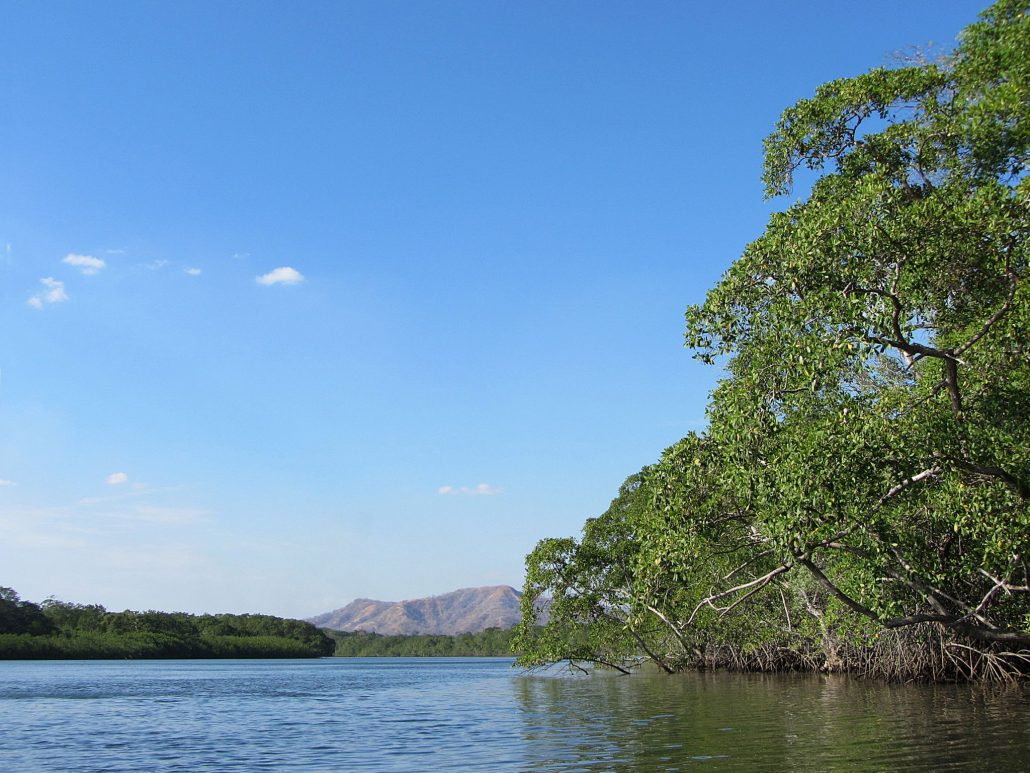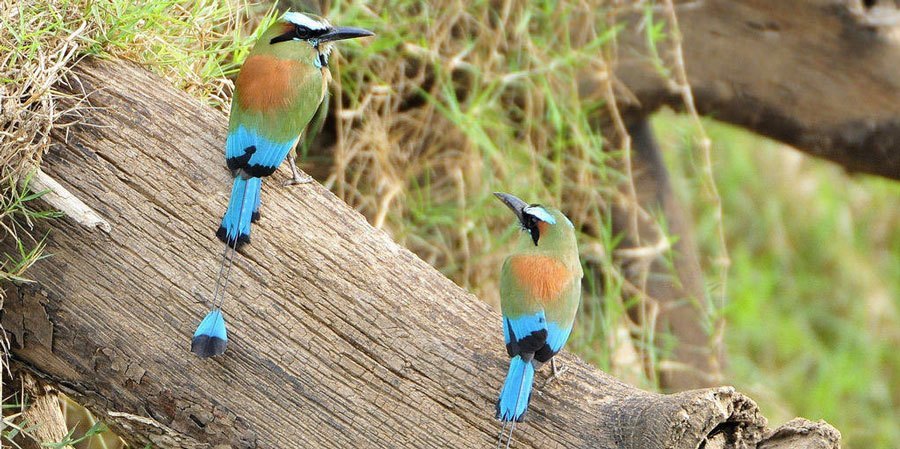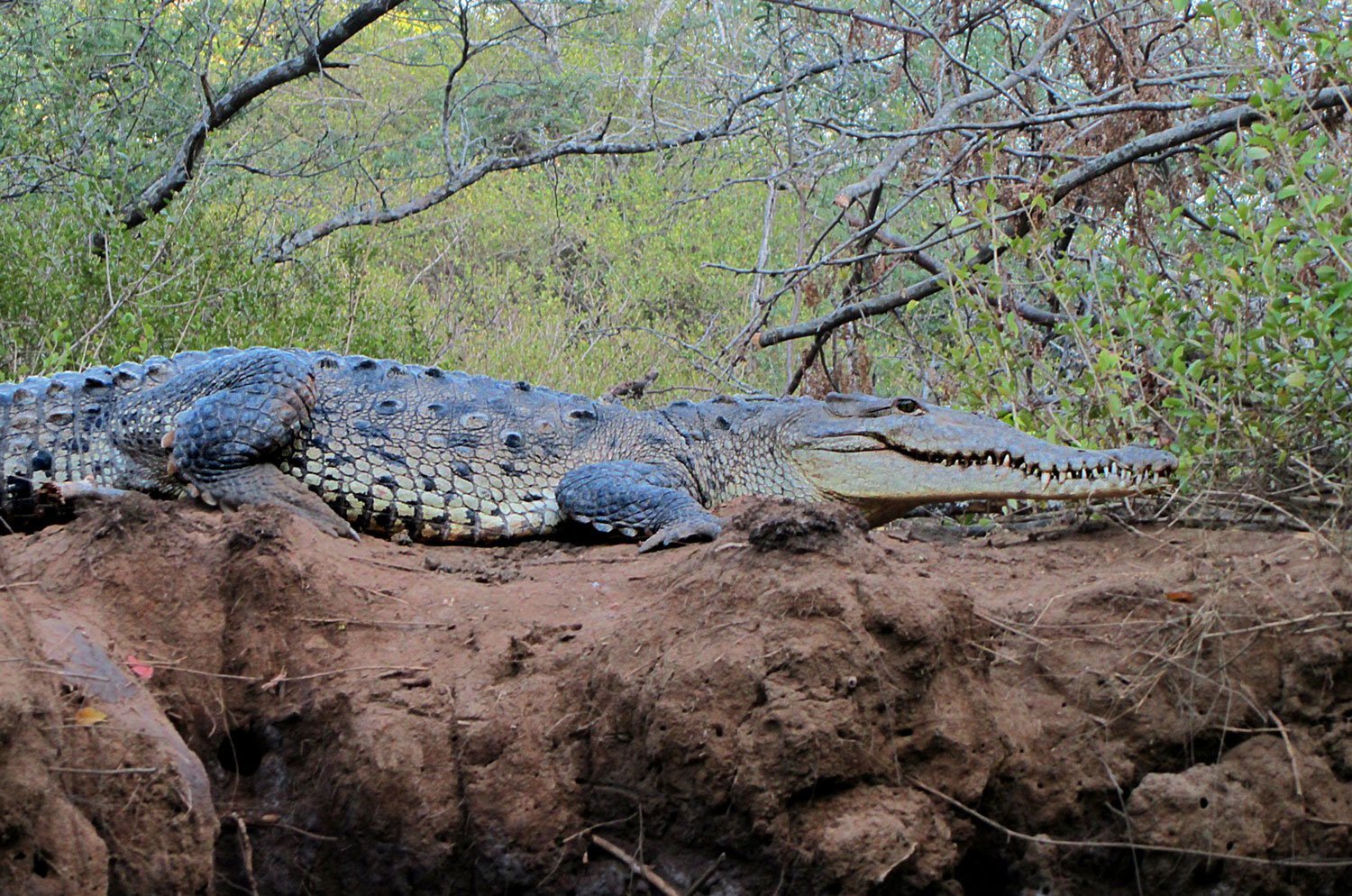You came for the beaches but you're now enthralled with the wildlife. After all, how often can your toes be in the warm sand, while a howler monkey hoots above or a prehistoric-looking ctenosaur scurries into its next sunny spot? This is Tamarindo, this is the glory of our natural wonderland, and this is the primary draw to a Tamarindo mangrove tour.
Yes, it's high time we shared with you the secret of this floating boat ride, set amidst the Tamarindo National Wildife Refuge and Las Baulas National Park. Yes, it's time we let you in on the adventure just minutes from town and a paddle away – in on the estuary, the mangroves, and the entirely different habitat (with its often hereto-unseen residents) that wait to welcome you.

You probably know that "the mangroves" refer to a watery habitat, usually with huge and visible tree roots. What you may not know is that mangrove is a group of 80-ish trees and shrubs and "mangrove forest" is the correct term for the habitat they form, almost exclusively in coastal intertidal zones where the trees are flooded daily (by rising tides). AKA, mangroves exist by the ocean, leading to the ocean, and connected to the ocean. This is a brackish kind of habitat, friends. (Brackish = a mix of salt and fresh water.) Speaking of the "connected to the ocean" bit – estuaries are even easier to define: they're those small and large rivers that you'll find running into the ocean. Walk long enough on almost any beach in Costa Rica – okay, with the exception of the tiny ones where jutting cliffs, rocky outcroppings, and other scenic obstacles block your further passage – and you'll stumble across an estuary.
We thought you'd never ask. Mangrove tours are one of our favorite go-to's: Rain or shine, morning or evening, dry season or green season, you're almost sure to have a great trip. Why? Because our mangroves are teeming with life. Enter our standard but-wait!: This isn't a zoo. No specific animal spottings are guaranteed. But, we're pretty confident you'll see something. With a dose of patience, an eagle-eyed guide, and maybe a pinch of luck, you'll spot several somethings. Several exciting somethings, to be exact: howler monkeys, iguanas, flying fish, crocodiles (yup – keep your arms and hands inside the boat, please!), and a large variety of birds (especially waterfowl, such as egrets and herons) are residents and frequent visitors to the Tamarindo mangroves.
The easiest (and, we think, best) way to see the Tamarindo mangroves is on a Tamarindo estuary tour, which pairs you with a sturdy boat (remember – crocodiles!) and a skilled guide who can spot a brown bird on a brown branch, 80 feet above the water. It's uncanny, we tell ya. Alternately, if you'd prefer to be a bit more active in your explorations, our Tamarindo estuary kayak tour swaps the boat for kayaks – and ups the adventure quotient by a few ticks!
Wait, what's a mangrove? What's an estuary?

You probably know that "the mangroves" refer to a watery habitat, usually with huge and visible tree roots. What you may not know is that mangrove is a group of 80-ish trees and shrubs and "mangrove forest" is the correct term for the habitat they form, almost exclusively in coastal intertidal zones where the trees are flooded daily (by rising tides). AKA, mangroves exist by the ocean, leading to the ocean, and connected to the ocean. This is a brackish kind of habitat, friends. (Brackish = a mix of salt and fresh water.) Speaking of the "connected to the ocean" bit – estuaries are even easier to define: they're those small and large rivers that you'll find running into the ocean. Walk long enough on almost any beach in Costa Rica – okay, with the exception of the tiny ones where jutting cliffs, rocky outcroppings, and other scenic obstacles block your further passage – and you'll stumble across an estuary.
Why tour Tamarindo's mangroves?

We thought you'd never ask. Mangrove tours are one of our favorite go-to's: Rain or shine, morning or evening, dry season or green season, you're almost sure to have a great trip. Why? Because our mangroves are teeming with life. Enter our standard but-wait!: This isn't a zoo. No specific animal spottings are guaranteed. But, we're pretty confident you'll see something. With a dose of patience, an eagle-eyed guide, and maybe a pinch of luck, you'll spot several somethings. Several exciting somethings, to be exact: howler monkeys, iguanas, flying fish, crocodiles (yup – keep your arms and hands inside the boat, please!), and a large variety of birds (especially waterfowl, such as egrets and herons) are residents and frequent visitors to the Tamarindo mangroves.
What's the best way to see the Tamarindo mangroves?

The easiest (and, we think, best) way to see the Tamarindo mangroves is on a Tamarindo estuary tour, which pairs you with a sturdy boat (remember – crocodiles!) and a skilled guide who can spot a brown bird on a brown branch, 80 feet above the water. It's uncanny, we tell ya. Alternately, if you'd prefer to be a bit more active in your explorations, our Tamarindo estuary kayak tour swaps the boat for kayaks – and ups the adventure quotient by a few ticks!


